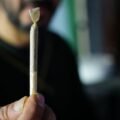Pro-tip for space travelers, if you ever find yourself in dire need of water and oxygen, just look for some lunar rocks.
Engineers have successfully demonstrated how water and oxygen can be extracted by the heating of lunar soil. The process was presented at the Europlanet Science Congress 2021, and the laboratory demonstrator was developed by a consortium of the Polytechnic University of Milan, the European Space Agency, and the OHB group.
Background: Lunar rocks rock?
Not all lunar rocks and soil are suitable for water and oxygen extraction. Around half of the lunar soil on the Moon is composed of silicon or iron oxides, which contains around 26% oxygen.
To extract life-supporting resources from lunar soil, the set-up uses a two-part process in which the soil is vaporized with hydrogen and methane, then subsequently “washed” with hydrogen gas. When it is heated to a temperature around 1000 degrees celsius, the minerals turn from solid to gas.
The gas produced and residual methane are shuffled to a catalytic converter and a condenser to separate the water. Through electrolysis, scientists can then extract oxygen. The by-products of the process, methane, and hydrogen are recycled in the system.
“Our experiments show that the rig is scalable and can operate in an almost completely self-sustained closed loop, without the need for human intervention and without getting clogged up,” said Professor Michele Lavagna, from the Politecnico Milano, who led the experiments.
To better understand the extraction process and to prepare the technology for a flight test, researchers carried out experiments to optimize the temperature of the furnace, the length and frequency of the washing phases, the ratio of the mixtures of gases, and the mass of the soil simulant batches.
Researchers found that oxygen yield is maximized by processing the soil simulant in small batches at the highest temperatures possible and using long washing phases.
“The capability of having efficient water and oxygen production facilities on-site is fundamental for human exploration and to run high quality science directly on the Moon,” said Lavagna.
“These laboratory experiments have deepened our understanding of each step in the process. It is not the end of the story, but it’s a very good starting point.”


Analysis: Battle of the Oxygen-making Machinery
As space travel accelerates in frequency and popularity, the need for life support in space only becomes more important, bringing with it the oxygen-making industry.
The European Space Agency appears as a key player in fostering the growth of this technology. Alongside its partnership with the Polytechnic University of Milan, the agency previously signed a contract with Belgium-based start-up Space Applications Service for three experimental reactors to fine-tune the oxygen-making process.
This contract, announced in May 2021, is for an oxygen-making machine to be tested on the Moon as part of the planned in situ resource utilization demonstration (ISRU) mission in 2025.
The Space Applications Service’s oxygen-making machine relies on the FCC Cambridge process—developed in the late 1990s for direct extraction of titanium from titanium oxide—in which electrolysis is used to separate the pure metal from the ore. When on the Moon, this process can be used to split lunar regolith into metal alloys and pure oxygen.
In addition to the FCC Cambridge method, the Space Applications Service is testing another technique for oxygen extraction: the hydrogen reduction of ilmenite.
Ilmenite is a titanium-rich ore found in parts of the Moon. Through this reduction technique, the lunar regolith is baked in a closed container with hydrogen gas, allowing the oxygen in the ilmenite to react with the hydrogen to form water vapor, which can then be split into oxygen and hydrogen.
Outlook: Next step, the Moon?
In 2020, the European Space Agency also opened a prototype oxygen plant in the Materials and Electrical Components Laboratory of the European Space Research and Technology Centre, ESTEC, based in Noordwijk in the Netherlands.
The oxygen plant is dedicated to this specific need for oxygen extraction, with its ultimate goal to develop a “pilot plant” that could operate sustainably on the Moon.
“Being able to acquire oxygen from resources found on the Moon would obviously be hugely useful for future lunar settlers, both for breathing and in the local production of rocket fuel,” said ESA research fellow Alexandre Meurisse.
But the Moon may not be the final destination for this line of research.
“ESA and NASA are heading back to the Moon with crewed missions, this time with a view towards staying,” said Tommaso Ghidini, Head of ESA’s Structures, Mechanisms and Materials Division.
“Accordingly, we’re shifting our engineering approach to a systematic use of lunar resources in-situ. We are working with our colleagues in the Human and Robotics Exploration Directorate, European industry and academia to provide top class scientific approaches and key enabling technologies like this one, towards a sustained human presence on the Moon and maybe one day Mars.”
Candy Chan is a journalist based in New York City. She recently graduated from Barnard College with a degree in History. Follow her reporting on her Twitter @candyschan.
